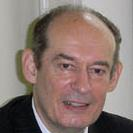International Journal of Mathematical Sciences and Computing (IJMSC)
IJMSC Vol. 7, No. 2, 8 Jun. 2021
Cover page and Table of Contents: PDF (size: 1458KB)
Stochastic Rules in Nucleotide Sequences in Genomes of Higher and Lower Organisms
Full Text (PDF, 1458KB), PP.1-13
Views: 0 Downloads: 0
Author(s)
Index Terms
DNA sequences, n-plets alphabets, genomes, percentages of n-plets, matrices, tensor product, tetra-groupings, gestalt genetics.
Abstract
The article presents new stochastic rules of nucleotide sequences in single-stranded DNA of eukaryotic and prokaryotic genomes. These discovered rules are candidates for the role of universal genomic rules. To reveal such rules, the authors represent any of genomic sequences in single-stranded DNA as a set of n parallel texts (or layers), each of which is written based on one of the different n-plets alphabets (n = 1, 2, 3, ...). Then comparison analysis of percentages of the 4n kinds of n-plets in the n parallel texts in such sequence is fulfield. In the result, unexpected stochastic rules of invariance of total sums of percentages for certain tetra-groupings of n-plets in different parallel texts of genomic DNA sequences are revealed.The presented rules significantly expand modern knowledge about stochastic regularities in long single-stranded DNA sequences, and they can be considered as generalizations of the second Chargaff's rule. A tensor family of matrix representations of interrelated DNA-alphabets of 4 nucleotides, 16 doublets, 64 triplets, and 256 tetraplets is used in the study. Some analogies of the discovered genetic phenomena with phenomena of Gestalt psychology are noted. The authors connect the received results about the genomic percentages rules with a supposition of P. Jordan, who is one of the creators of quantum mechanics and quantum biology, that life's missing laws are the rules of chance and probability of the quantum world.
Cite This Paper
S.V. Petoukhov, V.I. Svirin," Stochastic Rules in Nucleotide Sequences in Genomes of Higher and Lower Organisms ", International Journal of Mathematical Sciences and Computing(IJMSC), Vol.7, No.2, pp. 1-13, 2021. DOI: 10.5815/ijmsc.2021.02.01
Reference
[1]Jordan P. Die Quantenmechanik und die Grundprobleme der Biologie und Psychologie. Naturwissenschaften 20, 1932, p. 815–821, (doi:10.1007/BF01494844)
[2]McFadden J., Al-Khalili J. The origins of quantum biology. Proceedings of the Royal Society A, Vol. 474, Issue 2220, 12 December 2018, p. 1-13,https://doi.org/10.1098/rspa.2018.0674.
[3]Igamberdiev A.U. Quantum mechanical properties of biosystems: a framework for complexity, structural stability, and transformations. Biosystems, 31(1), 1993, p. 65–73.
[4]Matsuno K. Cell motility as entangled quantum coherence. BioSystems, 51, 1999, p. 15–19.
[5]Matsuno K., Paton R.C. Is there a biology of quantum information? BioSystems, 55, 2000, p. 39–46.
[6]Abbott D., Davies P.C.W., Pati A.K. (eds.), Foreword by Sir Roger Penrose.Quantum Aspects of Life, 2008. ISBN-13: 978-1-84816-253-2.
[7]Albrecht-Buehler G. Asymptotically increasing compliance of genomes with Chargaff's second parity rules through inversions and inverted transpositions. Proc Natl Acad Sci U S A. November 21; 103(47): 2006, p. 17828–17833.
[8]Chargaff E. Preface to a Grammar of Biology: A hundred years of nucleic acid research. Science, 172, 1971, p. 637-642.
[9]Prabhu V. V. Symmetry observation in long nucleotide sequences. Nucleic Acids Res., 21, 1993, p. 2797-2800.
[10]Fimmel E., Gumbel M., Karpuzoglu A., Petoukhov S. On comparing composition principles of long DNA sequences with those of random ones. Biosystems, vol. 180, June 2019, Pages 101-108.
[11]Hu Z.B., Petoukhov S.V., Petukhova E.S. I-Ching, dyadic groups of binary numbers and the geno-logic coding in living bodies. Progress in Biophysics and Molecular Biology, vol. 131, December 2017, p. 354-368.
[12]Petoukhov S.V. Matrix genetics, algebrases of genetic code, noise immunity. Moscow, RCD, 2008, 316 p. (in Russian). ISBN 978-5-93972-643-6.
[13]Petoukhov S.V., He M. Symmetrical Analysis Techniques for Genetic Systems and Bioinformatics: Advanced Patterns and Applications. Hershey, USA, IGI Global, 2010.
[14]Stent G.S. The Coming of the Golden Age. New York, the Natural History Press, 1969.
[15]Petoukhov S.V. Nucleotide Epi-Chains and New Nucleotide Probability Rules in Long DNA Sequences. Preprints 2019, 2019040011, 2019, 17 pages, doi: 10.20944/preprints201904.0011.v1,https://www.preprints.org/manuscript/201904.0011/v1
[16]Petoukhov S.V. Hyperbolic Rules of the Cooperative Organization of Eukaryotic and Prokaryotic Genomes. Biosystems, 198, 104273, 2020.
[17]Petoukhov S.V. Hyperbolic Rules of the Oligomer Cooperative Organization of Eukaryotic and Prokaryotic Genomes. Preprints 2020, 2020050471, 2020, doi:10.20944/preprints202005.0471.v2, https://www.preprints.org/manuscript/202005.0471/v2.
[18]Petoukhov S.V. The rules of long DNA-sequences and tetra-groups of oligonucleotides. arXiv:1709.04943v6 , 6th version from 22.05.2020.
[19]Petoukhov S.V. Genetic code and the Ancient Chinese «Book of Сhanges». Symmetry:Culture and Science, vol. 10, №3-4, 1999, p. 211-226.
[20]Gurvich A.G. Selected Works. Moscow: Medicine, 1977 (in Russian).
[21]Shchutskii Y.K. The Chinese Classical “I Ching”. Moscow, Vostochnaya literatura, 1997 (in Russian).
[22]Capra F. The Tao of Physics: an Exploration of the Parallels between Modern Physics and Easterm Mysticism. Boston USA, Shambala, 5th edition 2010, ISBN 978-1590308356
[23]Rosalina, Nur Hadisukmana. An Approach of Securing Data using Combined Cryptography and Steganography. International Journal of Mathematical Sciences and Computing(IJMSC), Vol. 6, No. 1, Feb. 2020, p. 1-9. DOI: 10.5815/ijmsc.2020.01.01.
[24]Pavan Sai Diwakar Nutheti, Narayan Hasyagar, Rajashree Shettar, Shankru Guggari, Umadevi V. Ferrer diagram based partitioning technique to decision tree using genetic algorithm. International Journal of Mathematical Sciences and Computing(IJMSC), Vol. 6, No. 1, Feb. 2020, p. 25-32. DOI: 10.5815/ijmsc.2020.01.03
[25]Pushpam Kumar Sinha. Modifying one of the Machine Learning Algorithms kNN to Make it Independent of the Parameter k by Re-defining Neighbor. International Journal of Mathematical Sciences and Computing(IJMSC), Vol. 6, No. 4, Aug. 2020, p. 12-25. DOI: 10.5815/ijmsc.2020.04.02
[26]Zuhi Subedar, Ashwini Araballi. Hybrid Cryptography: Performance Analysis of Various Cryptographic Combinations for Secure Communication. International Journal of Mathematical Sciences and Computing(IJMSC), Vol. 6, No. 4, Aug. 2020, p. 35-41. DOI: 10.5815/ijmsc.2020.04.04.
[27]Arfat Ahmad Wani, Badshah V. H. On the Relations between Lucas Sequence and Fibonacci-like Sequence by Matrix Methods. International Journal of Mathematical Sciences and Computing(IJMSC), Vol. 3, No. 4, Nov. 2017, p. 20-36. DOI: 10.5815/ijmsc.2017.04.03.
[28]Schrödinger E. What is life? Cambridge Press, 1944.
[29]Manin Yu.I. Computable and non-computable. Moscow, Sov.Radio, 1980, 125 p. (in Russian).

